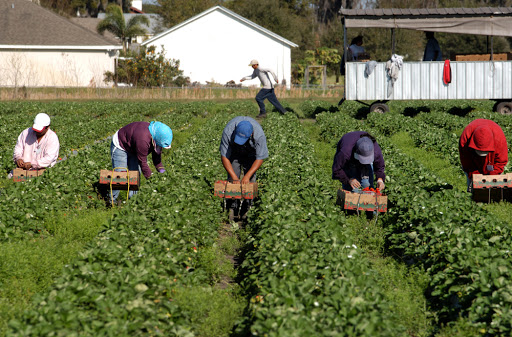Frost in the forecast is rarely a good thing in farm country during any season outside of winter. In an ideal world, the only exception is a killing frost after corn states hit black layer. Of course, we don’t always live in an ideal world, do we? Ryan Martin of Warsaw, Indiana, is a long-time agricultural meteorologist who says the threat of some frost damage will begin this weekend.
“The days most in question are Friday night, May 8, into Saturday morning,” he said. “The axis of the coldest air will come across eastern Minnesota, Wisconsin, east-to-northeast Iowa, northern Illinois, most of Indiana, as well as all of Michigan and Ohio. This is the zone where we’ll see temperatures at 30 degrees or colder.”
He said the coldest air looks to hit Michigan and Ohio this weekend, where we could see some big impact on soft red winter wheat, especially in Ohio. The frost timing is not good as wheat has woken up out of winter dormancy and is moving forward through its growth stages.
“The wheat is at the jointing stage and anytime the crop gets further into its growth, that means the wheat is a little more susceptible to cold temperatures,” Martin said, “depending on how much the temps fall and how long they’re under a certain threshold.
“If wheat is just breaking dormancy and you get a cold snap, you have to be under 28 degrees anywhere between three and five hours,” he added. “When we get into the jointing stage and further along, wheat can barely handle 30 degrees for an hour or two. That’s where the issue lies on wheat this weekend.”

going to slow down for a few days due to cooler than normal temps in farm country. (Photo
YouTube.com)
Corn and soybeans will hopefully be a different story. Based on the crop planting progress and emergence reports, Martin, Chief Meteorologist for the Hoosier Ag Today Radio Network, is much more optimistic about those crops being able to survive the freezing temps.
“Illinois leads the way with nine percent of its corn crop emerged,” he said. “In most areas, the growing point of the crop is still going to be below ground, so I don’t think it will mean anything for corn and soybeans on mortality. What it does do is slow down that incredibly fast-paced planting season we’ve seen in many states.”
A couple of other examples include Iowa, which was on a record planting pace during the last planting update, while Minnesota just to the north is no slouch either on planting progress. The Purdue University meteorology graduate says all of the “good stuff” that comes with early-planted corn gets slowed down and “stunted” because of the frost/freeze over the weekend and the extended run of below-normal temps that won’t end till the middle of next week.
“Cold air moved out of Canada and focused on the Great Lakes, Upper Midwest, and the northeastern United States,” Martin said. “However, there’s an interesting twist ahead in the forecast for the next seven-to-ten days. We’ll start to see temperatures in the below-normal areas start to moderate on May 13 through 15.
“Things will take a drastic switch after that,” he added. “We’ll see above-normal temps in the Eastern Corn Belt, while the Plains may drop down below normal through the last part of May. There’s a lot of air currents, different movements here, different patterns trying to emerge, and it all has to do with where polar air is shifting to this time of year.”
It’s been a bit of an unusual spring so far for many reasons, but I’m just talking about the weather. What we’ve seen so far in terms of temps and precipitation has been very different from recent years. There’s no question, a lot of states have seen temperatures consistently lower than what they normally expect.
“Big swings in spring temps aren’t unusual,” says Martin. “We’ve certainly seen them before. I think the reason it’s coming home to roost a little bit more and has people scratching their heads is the degree of change from the last several years.
“We’ve had pretty dog-gone decent springs over the past handful of years,” he recalled. “We’ve come out of winter early and been able to hit the ground running based on the temps. Last year, precipitation was a big problem, but the temperatures were still decent. This year is the first out of the past five or so that’s really showed us the kind of variability we can see in the spring.”
Ryan will do custom forecasts for your radio and TV stations. Check out his work at www.weatherstud.com.










